What happens if you don’t condition your dog’s tooled leather collar, repeatedly let him wear while swimming, and then do not exert any control while walking him and allow him to pull with all his might on his leash?
The short answer is… the collar is going to stretch, discolour, or worse… break!
In the photo above, you see an abused collar that belonged (for a few months) to a dog who loves to swim, and pull (hard) on his leash while the leather was still wet. Above it, you find his brand new replacement. You can see the difference in the colour and texture of the leather between the two (though the hardware is different). What you can’t see is the stretching… a new hole had to be punched a good 2″ back from the smallest hole to fit the dog!
Leather, when cared for, can survive many, many years of tough use. Most of my collars are made from vegetable tanned leather, which is the same leather that most equestrian riding saddles are made of; it’s the only leather that has the properties to allow it to be tooled, stamped, molded, and carved into the unique designs that you can enjoy from my shop.
Veg-tanned leather is not like the leather you see on shoes.. you can’t just cover it up with polish. Regular maintenance is key to maintaining its beautiful look, colour, and structural integrity. I find, on my own dogs’ collars, that it’s optimal to condition every few months, with more applications when the collar is still new. I use my own home-made conditioner (made of neatsfoot oil, virgin beeswax, lanolin, and vitamin E oil), which has the consistency of lip balm and can be applied much the same way. I let it melt on my fingertips, and then rub it in on the front and the back of the leather with my fingers. The lip-balm consistency prevents over-application. The goal is to have some of the oils rejuvenate the fibres of the leather, and for the waxes to protect the surface. If you use too much, you might saturate the leather resulting in darkening and greasiness. If you use too little, then likely won’t be conditioning enough for everyday protection. It is better to lightly condition regularly than to harshly clean and scrub dirty, neglected leather.
If your leather does get soiled (and I know it can – having dealt with two dogs who tackle each other on a lawn that is too vast to clean up every single day – as I’ve had my share of messy collars to wash), clean it gently with a pH-neutral soap such as glycerine soap. Use a damp sponge with the cleansing agent and use circular motions to dislodge the grime. Always condition after such cleaning.
When you buy a collar from my shop, I’ll always send a long a 10ml jar of the aforementioned home-made conditioner, which will go a long way in maintaining your collar’s strength and beauty.
When should you condition?
1. Develop a regular conditioning routine. If dog’s collar is worn continuously, apply it once a month. Condition after cleaning your leather.
2. Apply it if/when the leather does not bend easily, and/or the grain (top) side feels dry or flakey to the fingertips.
3. Condition when you begin to notice any superficial flaking or cracking, especially around the area where the buckle and D ring are attached (usually only happens if you disregard #1 or #4). Cracking is a flashing red warning sign! Try to condition before this happens.
4. The leather has become submerged in water, or has had prolonged contact with water such as in a bath (or your dog can’t resist jumping in the lake while wearing their collar) or a walk in a rainstorm.
5. Condition after cleaning with harsh agents such as soaps or alcohol based agents.
What if my dog loves to swim?
No leather collar will emerge unscathed from repeated water submersion and/or other abuse. Invest in a cheap nylon collar for those splashy good times! Those things will outlast us all!
What if my dog is a powerful puller?
If you dog loves to pull, there are ways of reinforcing the collar to prevent it from stretching and/or tearing over time.
1. Stitching all the way around the collar. This is the simplest way to reduce stretching on vegetable tanned leather straps, though takes longer to craft and usually adds a few ($10 ish) dollars to the cost of the collar.
2. Include a lining. An additional layer of leather is stitched to the main layer. It can be as thin as lining pigskin or as thick as the main tooled layer itself. This will require that the lining be stiched (see above) and will add another few dollars ($5 to $10) to the cost of the collar.
3. Incorporate fiberglass tape. This tape does not stretch, and has been used by leatherworkers in the past to reinforce straps that are subject extreme stress. The only caveat to this option is that it has to be sandwiched between the main layer and a lining layer, which means that the two options above will need to be applied (notable additional costs). The cost of the tape is minimal, and if a leatherworker does charge for it, it will likely not be very much (a dollar or two).
In summary, to deal with a puller, for someone purchasing an inexpensive collar with name and/or phone number stampings, adding the additional lining and stitching could be cost prohibitive. When purchasing a custom creation that takes hours if not days to craft that will cost in the area of $100, an additional $15 to $20 to assure that your collar is as strong and durable as it can possibly be seems to be common sense.
When you’ve invested your money and creative energies in a beautiful, hand-tooled leather dog collar, you don’t want to cheap out on its maintenance. The best conditioners will be mostly composed of oil (animal-based oils, as plant-based oils have a reputation of going rancid after applied to leather), which is drawn in to the leather fibres. I use pure Neatsfoot Oil, which comes from the shin bones of cattle. It remains in liquid form even at room temperature, and has been used for centuries to soften leather. The secondary ingredient is a wax, the best being beeswax, which remains on the surface of the leather, helping to improve water resistance. Virgin beeswax has had the pollen removed, and does not darken the leather as much as regular beeswax. Lanolin (derived from sheeps wool) is reputed to have superior conditioning properties to oil. The last ingredient is vitamin E Oil, which is used as a preservative to prevent oils from becoming rancid (and while expensive, happens to be good for both living skin and leather).
The cost of maintaining your leather is minimal when you factor in the life of your handcrafted product. With a small amount of effort and inexpensive leather conditioning products, you can increase the longevity of your handcrafted product by many, many years.

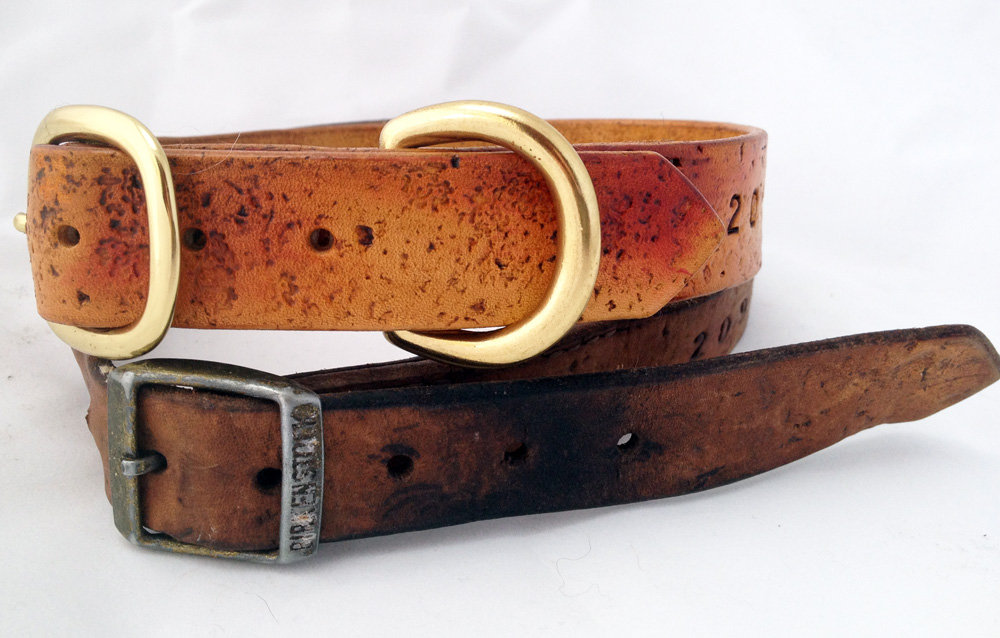
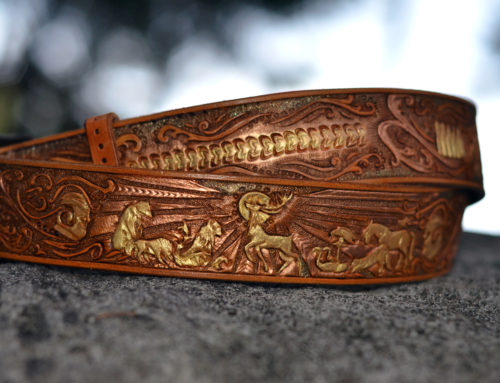
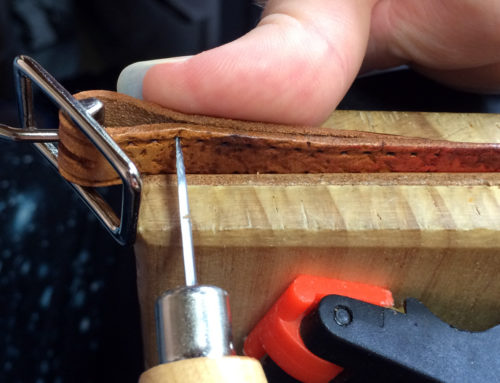
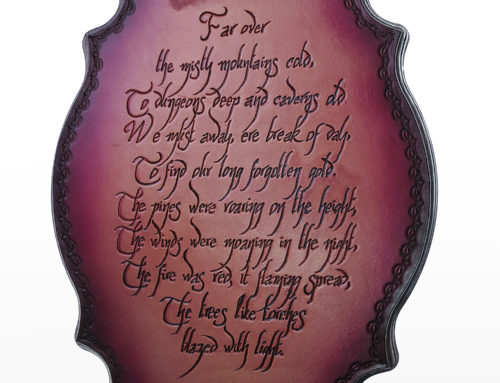
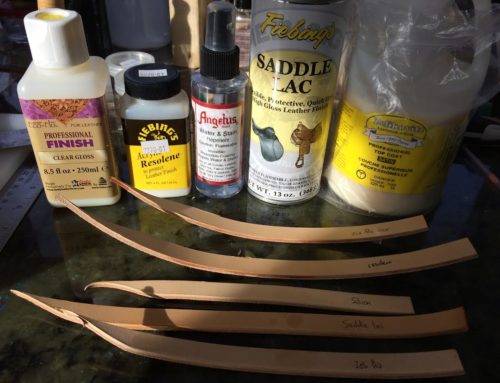
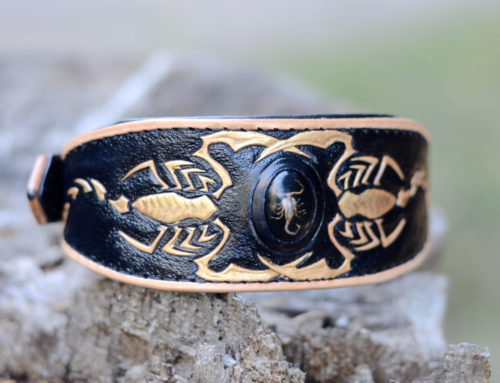
You made a good case for the four products you incorporate into your own leather conditioner. So of course I’ll ask if you are selling it. I would order it! Thanks, Kimbra Wood
Hi Kimbra,
Thanks for your comment! I actually have a batch of these ready and hadn’t published the Etsy listing until now, as I find that Canada Post’s shipping cost for something this small to be ridiculously high. It pains me to list an item where the shipping cost is higher than the item cost.
You can find it at https://www.etsy.com/ca/listing/177014939/